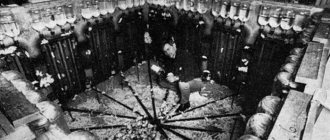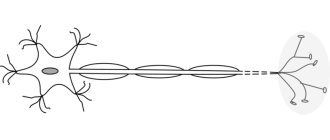The Stanford prison experiment was organized by F. Zimbardo and his assistants. The scientist set himself a goal: to study the nature of cruelty and violence that appears in people when they are in an unusual social role. At the same time, Zimbardo's experiment showed people's reactions to forced restrictions on freedom.
Philip Zimbardo's Stanford prison experiment is a clear example of how social role determines the presence or absence of sadistic traits in a person's character.
History of the Stanford experiment
The Stanford prison experiment was designed by Zimbardo based on a similar dormitory experiment conducted by his student D. Jaffee. In F. Zimbardo's project, this student was assigned the role of assistant and outside observer.
The Stanford experiment was planned and carried out in August 1971 at the university. The scientist published an advertisement in the university newspaper that male students were invited to participate in a study on the psychology of prisoners. It was also said there that the subjects would be paid for participation in Philip Zimbardo’s prison experiment, and the experiment itself would last 2 weeks.
According to the author, students had to try themselves in two types of roles: prisoners and prison guards. This was necessary in order to track changes in human behavior in an artificially created situation.
The experiment was commissioned by the US Navy because the Navy leadership was interested in the causes of frequent conflict situations in the Marine Corps and in penal colonies.
During the experiment, D. Jaffee made notes, the analysis of which allows us to say with confidence that he himself partially shaped the cruelty in the behavior of the guards, suggesting scenarios and behavior patterns to the subjects of this group. Audio recordings confirm that Jaffee insisted on the display of cruelty and aggression on the part of the pseudo-prison guards, assuring the subjects that it was necessary for science.
Today, the experiment at Stanford University has become world famous. The goals of the experiment and its results did not coincide: during the experiment, the psychology of the subjects changed greatly. The results of the experiment shocked not only the participants, but also the initiators of this study.
Three films have been made based on Philip Zimbardo's Stanford prison experiment. There is also a book describing in detail the conduct of the Stanford Prison Experiment.
Interesting Facts
Soon after the experiment, bloody riots broke out in several American prisons. On this occasion, Zimbardo contacted the authorities and advised them to apply in prisons the developments that he had arrived at through his experiment.
When a huge scandal broke out at the American prison in Iraq, Abu Ghraib, in 2004, many experts noted its similarities to the Zimbardo experiment. Among these experts was the researcher himself. He was also present at the trial of the guards. Zimbardo argued that it was wrong to place all the blame on a few “unloved” guards, since the true cause of the incident lay in the penal system itself.
In 2021, some researchers discovered that the Stanford experiment may have been staged. French sociologist Thibaut Le Texier discovered strange research notes in the Stanford University archives. Another researcher published an article disproving the results of the Stanford experiment.
Cases of acting by participants were identified, in particular, during interviews with them some time after the experiment.
.
In addition, it was stated above that Zimbardo himself instructed the guards how to behave before the study began, and they therefore simply played their assigned roles.
If the experiment is staged, then there is no need to talk about its scientific value. On the other hand, in this case, like the aforementioned Milgram experiment, it demonstrates how completely normal people agree to any, even the most cruel and insane actions, if they are prompted to do so by authority.
The Stanford experiment also demonstrates that psychological research is not immune to distortions caused by subjectivity, bias, and wishful thinking. And psychology itself was sometimes accused of being “unscientific,” and attempts were made to assign it the status of “parascience”—something between real science and pseudoscience. The latter, of course, is clearly overkill. The same Milgram experiment is quite objective, and multiple repetitions showed the same results. The similar Stanford experiment turned out to be simply too theatrical - the participants knew in advance the true conditions and goals of the study.
Stages of research preparation
Philip Zimbardo's experiment was carried out in several stages.
Selection of experiment participants
After an advertisement was published in the university newspaper, 70 students volunteered to take part in the Stanford Prison Experiment. All of them underwent numerous psychological examinations, based on the results of which Zimbardo selected 24 students to participate in the Stanford experiment. They had no deviations in physical and mental development.
Distribution between guards and prisoners
A feature of Philip Zimbardo’s experiment was that the subjects who were offered different roles were approximately the same age and had the same social status. They were all college students. The scientist suggested that their stock of social knowledge and baggage of life experience is approximately the same.
In real life, the students were equal to each other; the distribution into two groups was carried out randomly. However, those who were given the role of guards were told that this role went to them because they possessed the personal qualities necessary to control the behavior of prisoners. They did not undergo any special training. The day before the start of the experiment, they were invited to a briefing, where they were warned about the inadmissibility of physical violence against prisoners. They were given guard uniforms, mirrored sunglasses and batons. According to the author's plan, they were supposed to go around the prison.
A shift mode of “work” was provided for the guards: the guards were on duty in groups of three, the shift ended after 8 hours, but after a few days most of them expressed a desire to be on duty in the artificially created prison overtime, although the organizers of the experiment warned them that this was the time of participation There will be no payment for the experiment.
The organizers of the Stanford Prison Experiment briefly informed the guards that their task was to create in prisoners a feeling of their own powerlessness, fear, and melancholy. They must feel that the guards have the right to be arbitrary, that every action of the prisoners is controlled by the system and the guards. This was how it was planned to destroy the individuality of the prisoners.
It is noteworthy that the prisoners were sure that tall young men were included in the group of guards. Although the experiment organizers did not take into account the body features of the subjects.
It turned out that the external paraphernalia of Zimbardo’s prison experiment was enough for the subjects to try on the corresponding model of behavior: the guards behaved harshly towards the prisoners, and they, in turn, quickly lost their individuality and stopped resisting the pressure of the guards of order.
So the scientist divided the students into 2 groups: from the first day, 9 people from both groups began to participate in the experiment, 3 people in each group were reserves.
During the Stanford prison experiment, Zimbardo needed to introduce 2 spares to the group of prisoners and one spare to the group of guards.
Thus, 21 students took part in Zimbardo’s “Prison” experiment: 10 guards and 11 arrestees.
Converting a wing of the university into a “prison”
One wing of the university building was converted into a prison. The prison yard became a corridor, the width of which did not exceed 2 meters. In that corridor there were doors to 3 classrooms. The doors were replaced with bars, and all the furniture was removed from the offices. Only trestle beds for prisoners were placed in the classrooms. Thus, classrooms turned into prison cells. According to the author’s idea, 3 people were placed in each such cell.
In the same corridor there was a utility room, which became the guards' room. They decided to use the equipment cabinet in the corridor, the internal size of which was 70 by 70 cm, as a solitary cell. Thus, scenery was created that contributed to disorientation and loss of self-identity of the participants. In such conditions, young people quickly lost their sense of reality.
Throughout the experiment, Zimbardo himself and his assistants conducted round-the-clock monitoring of what was happening in the pseudo-prison. The “cells” of prisoners and the guards’ headquarters, as well as the corridor itself in which these rooms were located, were equipped with cameras and numerous listening devices.
Prison conditions
According to the schedule, prisoners were fed 3 times a day. They were allowed to visit the restroom three times a day, under the supervision of a guard. They were also given 2 hours to read books or write letters. They were allowed to have dates twice a week, and they also had the right to play sports or watch movies.
Each morning began with a roll call to ensure that all prisoners were present. Initially, roll calls lasted approximately 10 minutes, but eventually their duration increased to several hours.
Taking advantage of their position, the guards changed or completely canceled certain items of the daily routine of the prisoners.
The experimental prison quickly turned into a creepy and dirty place. It was considered a special privilege to simply take a shower or wash your face. The criminals were forced to clean toilets with their bare hands.
In addition, mattresses were removed from the “bad” cells, and the experimental subjects had no choice but to simply fall asleep on the cold floor. Sometimes they were not fed at all, as this was a kind of punishment.
On the first day of the Stanford experiment, everything went quite calmly, but on the second day a real riot broke out. To suppress it, the guards attacked the prisoners, releasing jets of carbon dioxide from fire extinguishers at them.
The jailers deliberately created situations in which criminals began to quarrel with each other, in order to generate hatred between them.
They also forced prisoners to think that there was an informant in their environment. All these actions had a psychological effect, and there were no future riots.
Replacement of a participant due to a hunger strike
A participant who suffered a nervous breakdown while in solitary confinement was replaced by a student from among the reserves. Finding himself in the role of a prisoner, he immediately declared that he would not obey the established rules. He tried to initiate a new rebellion by going on a hunger strike, but those participants who were in the “game” from the very beginning did not feel strong enough to openly confront.
As a result, a new prisoner with pronounced leadership abilities, without receiving support, turned into an outcast. The guards ordered the rest of the prisoners to spread rot on this rebel. The strong emotional shock and difficult psychological situation in the pseudo-prison led to the fact that by the evening this young man’s nerves gave out: further participation in the experiment could lead to irreparable consequences.
The most cruel warden
The harshest overseer was Dave Eshelman, who later became the owner of the mortgage business. When he became a participant in the Stanford experiment, Dave wanted to stage some kind of “action” so that the press would write about it.
According to Eshelman, he deliberately behaved cruelly in order to make the Stanford experiment as interesting and revealing as possible. Acting skills helped him to behave in the role of an angry and cynical overseer, since at that time he was studying in a theater studio.
Dave himself wondered how long the prisoners would endure his antics and bullying. Eshelman was even surprised that no one tried to stop him. How can we not remember the Stockholm syndrome (see 10 unusual mental syndromes)!
Deal
Students in the role of security guards have completely gotten used to their new status. Most of them, having received unlimited power, demonstrated cruelty. They humiliated prisoners the most at night, believing that video surveillance did not work at that time.
Seeing that events were developing rapidly, on the third day Zimbardo offered the experiment participants, playing the role of prisoners, a deal: they could leave the project by refusing any monetary reward for participating in it. All the prisoners agreed. However, in order to comply with the release procedure, they had to write a petition for clemency, which was subject to consideration by the jury (their role was performed by final year students of the Faculty of Psychology).
Voluntary refusal to receive material compensation for participating in the experiment guaranteed the students the right to immediately leave the makeshift prison. However, they all resignedly wrote a petition for clemency and went to their cells to await the decision of the jury. A few hours later they were informed that the jury had made a negative decision on all requests for clemency. This news caused a hysterical reaction in half of the prisoners.
By the sixth day, the cruelty of the guards reached its climax: they violated all ethical principles, their actions posed a serious danger to the mental health of the prisoners. The experiment had to be stopped.
Placement in prison
To recreate a real arrest, the subjects were unexpectedly arrested in their own homes. They were charged with various crimes, searched, handcuffed and taken to the police station.
There they were fingerprinted and... After this, each prisoner was completely undressed upon arrival at the prison and given appropriate hygienic treatment. Then they were put on prison clothes (without underwear) and sent to a cell.
The senior warden read the rules to the prisoners, which they were obliged to obey. “Criminals” were forbidden to address each other by name. Instead, they were required to recite the numbers written on their forms.
Why did they stop the experiment?
The decision to terminate the project was made because the “game” had gone too far. Conditions for prisoners became inhumane. Participants who were not diagnosed with mental disorders at the beginning of the project were in a state of severe stress after 6 days.
F. Zimbardo noticed that not only did his subjects closely integrate with the new role, but he himself felt not just a psychologist, but a prison warden. The author was so carried away by reprisals that he forgot about moral principles, which should always be higher than science.
The message that the project would be completed ahead of schedule was perceived differently by the two groups of subjects: prisoners with enthusiasm and excitement, and guards with disappointment and regret.
Conclusions from Zimbardo's experiment
According to F. Zimbardo, the Stanford prison experiment proved that power corrupts a person. Briefly, the following conclusions can be drawn from Zimbardo’s experiment:
- If you give a person unlimited power, he will definitely use this power. A tendency towards cruelty will awaken in him.
- If under usual conditions a person is not prone to aggression, psychological pressure and humiliation of others, this does not mean that, being in a new social role, he will not behave like a despot and tyrant.
- Sadistic tendencies manifest themselves in a person who has never previously been seen in inhumane acts in a short time when acquiring an appropriate social role.
- Feeling the strength and status advantage of another person, people quickly lose the ability to withstand psychological pressure. Creative individuals cannot accept injustice longer than passive people.
The results of the experiment were later used as visual evidence of the influence of authority and as confirmation of the theory of cognitive dissonance.
My opinion on the Stanford experiment
The study of the nature of human cruelty at the end of the last century was the subject of research by many authors. However, the most ambitious project at the end of the last century was the pseudo-prison of F. Zimbardo.
The author managed to make a significant contribution to science; the results of his experiment found practical application not only in experimental psychology.
However, I believe that the famous psychologist was not able to apply all his skill in this experiment. He failed to maintain the position of a researcher; he became involved in a dangerous game. In addition, he saw the unacceptable behavior of a group of guards, but did not apply sanctions to them, that is, he ignored moral principles. He didn't want to interrupt the experiment. Instead of sanctions for unacceptable behavior, he gave guards more and more freedom.
Many sources mention that this project was ordered by the US Navy, but nowhere does it even briefly say whether, with the help of the results of Philip Zimbardo’s experiment, the customer was able to solve problems that were pressing for them.
The results of the experiment, in my opinion, cannot be considered absolutely indicative and reliable, since the guards did not come to such behavior on their own; they acted on the instructions of D. Jaffee, who demanded that they show cruelty.
All documents describing this prison project mention the severe psychological state of the subjects at the end of the 6th day of being in terrible conditions. However, there is no information anywhere about whether any rehabilitation work was carried out with the subjects after this?
The role of Christina Maslach
At the time of the experiment, Christina Maslach was Philip's fiancée. It was she who asked her fiancé to immediately stop the unusual experiment at Stanford.
Initially, the girl did not find anything unusual in Zimbardo’s ideas. However, this continued until the moment she herself went down to the basement and saw a terrifying picture of the reality of this unusual research.
Christina was shocked by the behavior of the man she was soon going to marry. It immediately became clear to her that Philip was the victim of his own research, having received unlimited power over conditional captives.
That same day, Christina Maslach told Zimbardo that if he did not stop the experiment immediately, their relationship would end. Philip listened to her opinion and the very next day the experiment was officially stopped.










